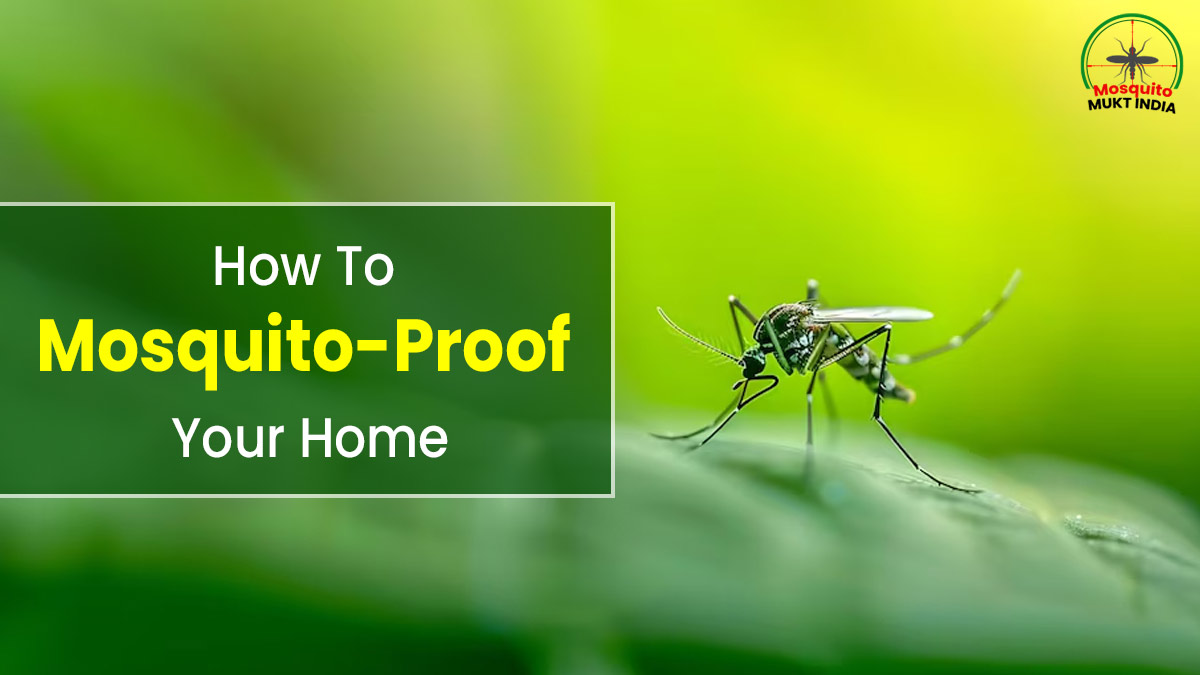
We all understand the importance of mosquito prevention. We all know about the consequences of mosquito bites and the kinds of infections we are exposed to thereafter. But how many of us really commit ourselves to protecting our loved ones against these vicious monsters called mosquitoes? What are the kinds of steps you take to mosquito-proof your home and prevent mosquito breeding? If you’re still on the road to discovering tips and tricks, here are some practical, simple, and effective strategies to follow. This article is part of our Mosquito-Mukt India campaign, commemorating World Mosquito Day 2024.
Table of Content:-
Also Read: Mosquito-Mukt India: Understanding The Types Of Mosquito-Borne Diseases And How They Spread
Most Effective Mosquito Prevention Strategies

In an interaction with the OnlyMyHealth team, Dr Poonam Kadam, Consultant Microbiologist, Manipal Hospital, Baner, Pune, says that the safest way to prevent mosquitoes from entering the house is the window mesh, of a diameter less than 0.0475 inch.
Additionally, the mosquito repellent liquid obtained from natural plants has remarkable mosquito-repellent action and is non-pollutant, environmentally friendly, and highly safe, she adds.
Other ways include mosquito nets, electric instruments, UV light mosquito killers, etc.
However, resorting to home remedies does not suffice when it comes to mosquito prevention at home. It is also crucial to identify standing water in lawns, pools, and plant pots, especially during the rainy season.
How To Properly Identify Standing Water Around Your Home

First and foremost, it is crucial to identify containers that can collect water and remain stagnant. These include empty pots, discarded tins, coconut shells, flower vases, and tiers that collect rainwater.
Stagnant water in these containers can be a favourable site for mosquitoes to breed and thrive, says Dr Kadam.
The US Centers for Disease Control and Prevention (CDC) recommend checking your surroundings for stagnant water once every week. The health body advises emptying and scrubbing, turning over, covering, or throwing out items that hold water, such as tires, buckets, toys, pools, birdbaths, flower-pot saucers, or trash containers.
Dr Kadam shares that we should inspect our homes and surroundings for standing water weekly and drain it before the completion of the life cycle of mosquitoes, as it takes approximately 8-10 days.
Also Read: World Mosquito Day 2024: Telltale Signs You're Suffering From A Mosquito-Borne Illness
How Do You Eliminate Standing Water?

Empty any container, indoors and outdoors, with standing water, and clean the container.
If the standing water cannot be removed, like water in decorative ponds, sewage ponds, and water plant pots, one can pour kerosene, fuel oil, or vegetable oil on the surface so that mosquito larvae cannot carry forward the breeding process.
Dr Kadam says, "We can also use Gambusia fish that feed on mosquito larvae as a biological control measure. Mosquito dunks or bits containing natural bacteria called Bacillus thuringiensis, which are extremely toxic to mosquito larvae, can be used to kill larvae in stagnant water."
“Mosquito infestations can be reduced with routine home care, which includes clearing out gutters, cutting back overgrown vegetation, fixing leaking faucets, and making sure drainage is adequate. Maintain the grounds manicured and get rid of any extraneous items or waste that could catch water,” she adds.
Also watch this video
How we keep this article up to date:
We work with experts and keep a close eye on the latest in health and wellness. Whenever there is a new research or helpful information, we update our articles with accurate and useful advice.
Current Version